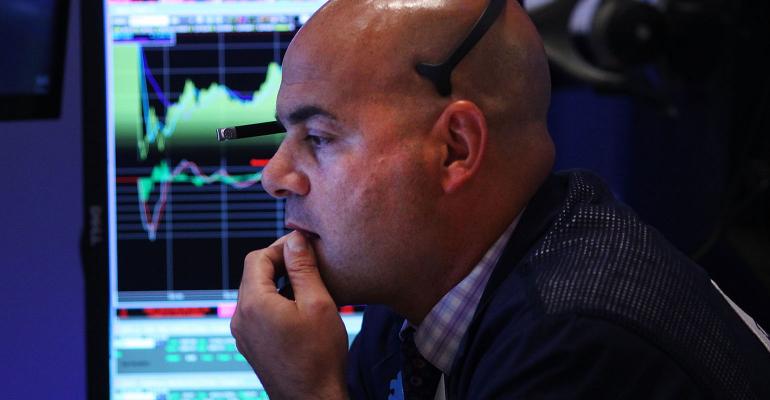By Jim Bianco
(Bloomberg Prophets) --A few years ago, investment blogger Michael Batnick posted a timeline of the great money managers since 1870. What was striking about the list of 67 was that only five were born after 1960: David Einhorn, Ken Griffin, Cliff Asness, Bill Ackman and Dan Loeb.
So why are no star investors under 50? The simple answer is that the financial crisis took a serious toll on the industry. Active managers have underperformed benchmarks for far too long in one of the greatest bull markets in history. As a result, they are losing assets to firms focused on low-cost, passive investing strategies, a shift that is shaking up markets in a not-necessarily-good way.
Today, the best and the brightest students are avoiding financial services in favor of more lucrative jobs in technology. A 2013 graphic from the Harvard Crimson shows that only about 5 percent of MBA graduates entered investment banking, compared with almost 20 percent going into technology. Back in 2006, it was about 12 percent for investment banking and 7 percent for technology.

Active management is being disrupted, and passive options are the disruptors. As was the case with taxi drivers fighting Uber, these disruptors are not going away. Higher volatility may help some active managers, but investors will need to see long periods of outperformance before reconsidering their affinity for passive investments.
The next chart shows flows into passive ETFs (red) and active mutual funds (blue). Highlighted on the chart is the depth of the financial crisis, September 2008. This appears to be the inflection point where investors soured on active management in favor of passive investing. So, if one thinks a bear market or more volatility will save active managers, the last bout certainly didn't.

The game plan for active managers has always been about maximizing assets under management. More assets equated to bigger paydays for managers. But, as the charts above attest, the current active management model can't compete with the cheaper passive/exchange-traded fund model in asset gathering or in terms of returns.
So why should you care? As we noted in February, capitalism is supposed to reward good ideas and punish bad ones. This helps the economy evolve rather than stagnate. Passive investing may have provided superior returns in recent years, but it does not properly allocate capital.
What does the future of active management look like? We believe it should only seek a portion of an investor's assets. To do this, they will have to create highly idiosyncratic and concentrated portfolios. They will have to find the one thing they do well and do it in a concentrated, risk-seeking way, whether it be health-care, emerging markets, macro themes, algorithms, technology or trading. The manager will need to be known as the "go to" person in that space to emerge as the next star, allocating capital as efficiently as possible.
Unfortunately, many active managers take the exact opposite approach. They focus on gathering assets via a diversified, broad based, index-hugging portfolio. This model is no longer viable, as passive ETFs do this more efficiently while charging lower fees. In Wall Street parlance, active managers cannot generate enough alpha to justify the higher fees over passive/ETFs.
We cannot blame recent college graduates for choosing careers outside of active management. Many difficult changes must be made in the industry, and, for the time being, there are better opportunities elsewhere.
This column does not necessarily reflect the opinion of the editorial board or Bloomberg LP and its owners.
Jim Bianco is the President and founder of Bianco Research, a provider of data-driven insights into the global economy and financial markets.
To contact the author of this story: Jim Bianco at [email protected]
For more columns from Bloomberg View, visit Bloomberg view





